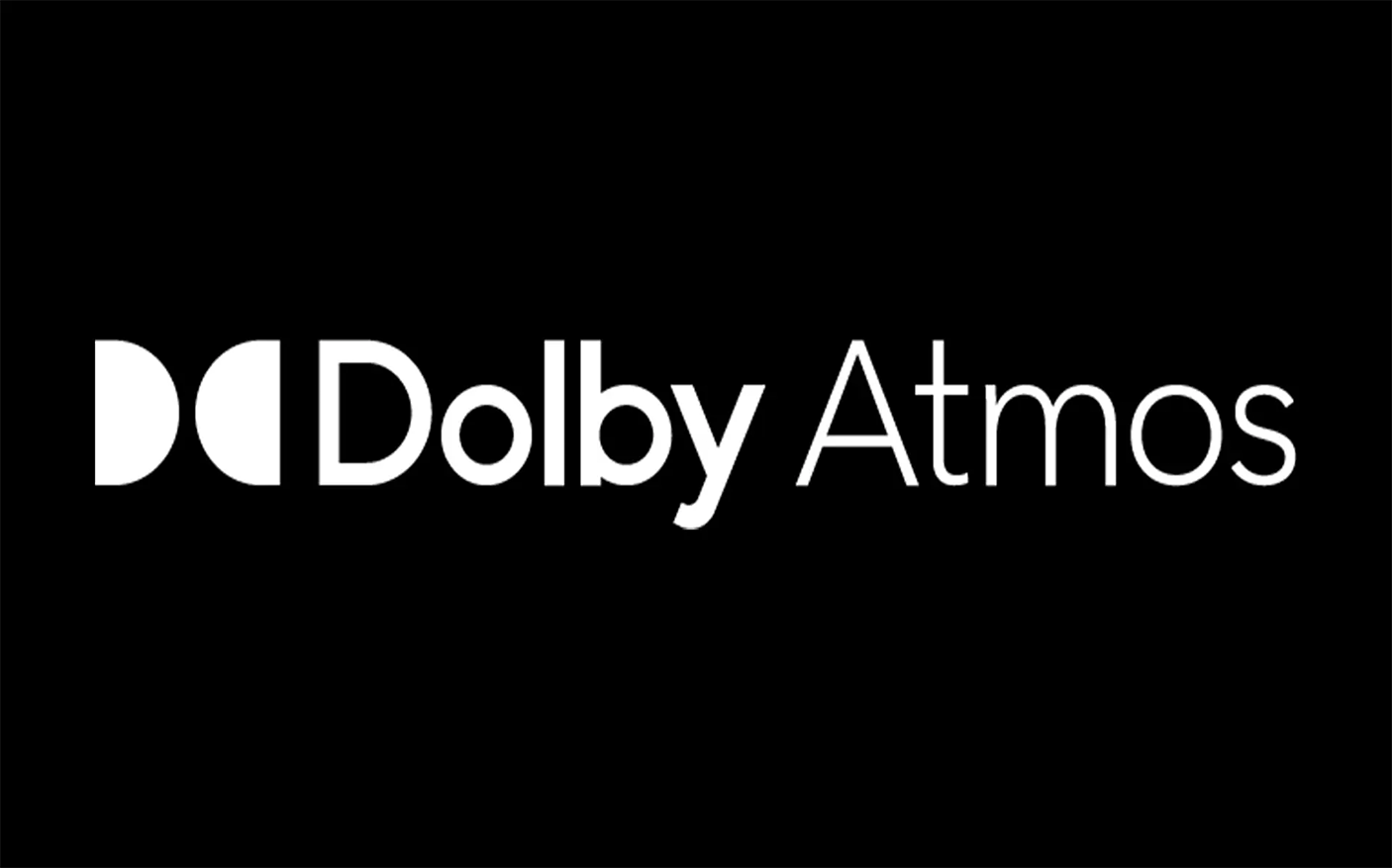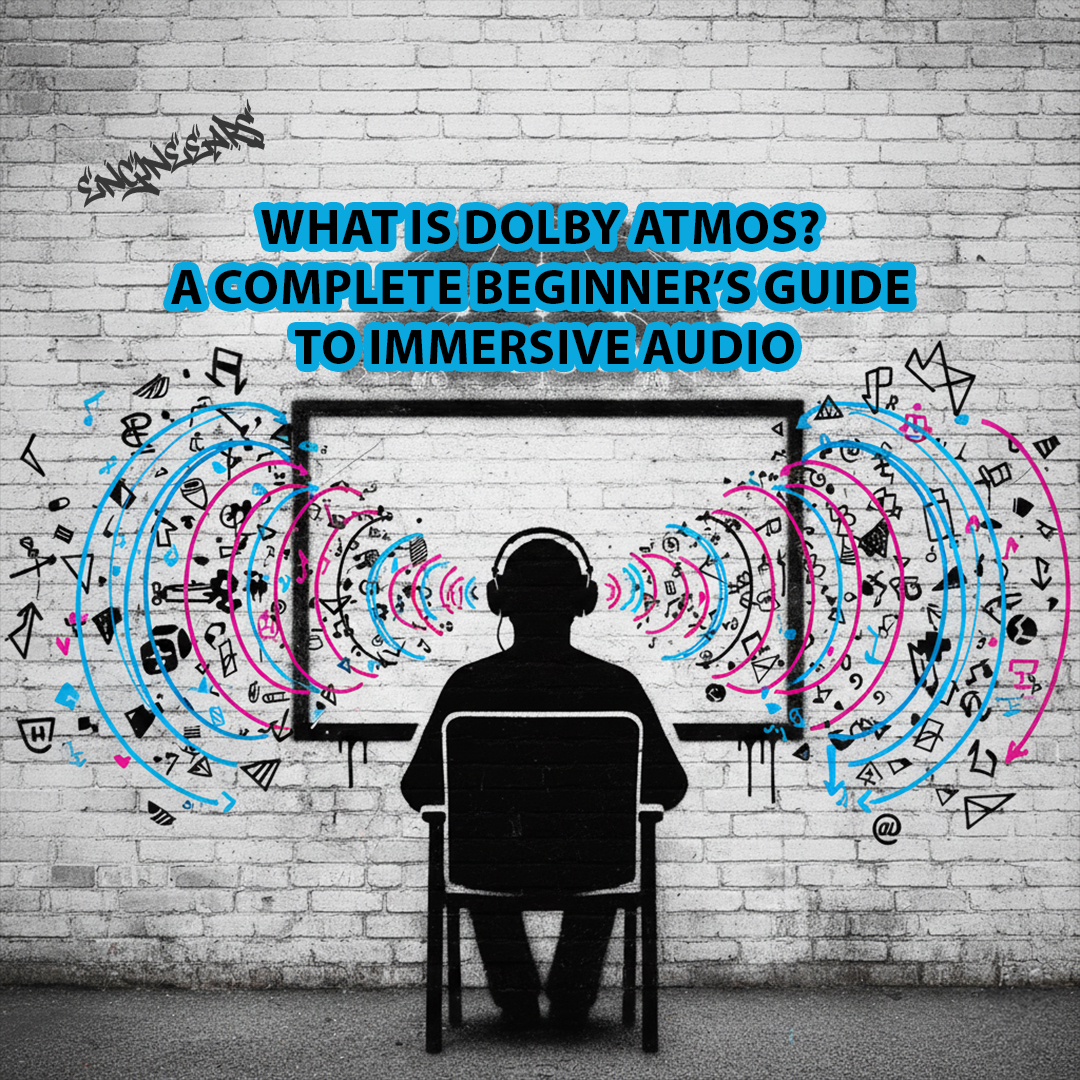Dolby Atmos is one of the most transformative audio technologies shaping music, gaming, and home entertainment today. If you’ve ever watched a movie where the rain felt like it was falling around you, or listened to a mix so detailed it felt like stepping inside the track. That’s the Atmos effect.
But what exactly is Dolby Atmos? How does it work? And why is the music industry pushing toward immersive audio so quickly? Let’s break it down clearly and simply.
First Things First: How Traditional Sound Works
Before Atmos, nearly all audio systems were built around channels: A fixed left, right, and surround positions.
Stereo (2.0)
Two channels: left and right. Classic, simple, reliable.
In music:
-
Vocals sit in the center
-
Guitar might live on the left
-
Drums spread evenly across the stereo field
5.1 Surround Sound
Designed for films, not music originally:
-
Front left, center, right
-
Rear left / rear right
-
Subwoofer
It wraps sound around you, but everything is still locked to specific speakers, limiting how “real” or dimensional audio can feel.
 Where Dolby Atmos Changes the Game
Where Dolby Atmos Changes the Game
Dolby Atmos steps beyond channels altogether.
Instead of assigning sound to a fixed speaker, Atmos uses audio objects — individual sounds placed anywhere in a 3D field. Sounds are no longer tied to a speaker. They’re tied to space.
This creates:
-
True overhead sound
-
Smooth sound movement
-
A fully immersive listening environment
This shift is why Dolby Atmos has become such a major talking point…especially in music. Even platforms like EngineEars, which help artists produce and distribute high-quality audio, are investing heavily in Dolby Atmos education and certification to prepare the next generation of mixers.
Why Dolby Atmos Matters Right Now
Atmos isn’t hype. It’s a shift in how audio is created, mixed, and consumed.
For Movies and TV
Scenes feel dimensional, natural, and alive. Dialogue becomes cleaner and effects more cinematic.
For Gaming
You can hear where everything is coming from — footsteps, reloads, wind, enemies.
It’s immersion and a competitive edge.
For Music
This is where the industry is evolving fastest.
In Atmos:
-
Vocals can sit slightly above you
-
Instruments can surround you
-
Reverbs and atmospheres become expansive
-
Details feel clearer and more intentional
More artists are releasing spatial mixes every week, and distributors like EngineEars Direct support Atmos-ready releases so independent artists aren’t left behind as the music landscape shifts.
 How to Experience Dolby Atmos at Home
How to Experience Dolby Atmos at Home
You don’t need a massive home theatre. Here are the most practical options:
1. Dolby Atmos Soundbars
Models like the Sonos Arc Ultra, Samsung HW-Q990D, and Sony BRAVIA Theatre Bar 9 use upward-firing speakers to bounce audio off your ceiling: delivering overhead sound without multiple speakers.
What to consider:
-
HDMI eARC
-
Room size
-
Expandability (rear speakers or sub)
2. AV Receivers with Dolby Atmos
For the purists.
An AV receiver plus dedicated speakers creates a true cinematic experience.
This is the closest you can get to professional studio playback at home. Especially helpful if you’re studying Atmos mixing through programs like the EngineEars Dolby Atmos Certification Course, where accurate monitoring is essential.
3. Streaming Services with Atmos Content
You can experience Dolby Atmos on:
Movies & TV
-
Netflix
-
Apple TV+
-
Disney+
-
Max
Music
-
Apple Music
-
TIDAL
-
Amazon Music
For artists, EngineEars Direct provides a frictionless path to delivering Atmos tracks while keeping 100 percent ownership, making it easier for independent creators to join the immersive audio era.
Recommended Gear List (Curated for Music Lovers)
Soundbars
-
Sonos Arc Ultra – Best all-around choice
-
Samsung HW-Q990D – Most powerful Atmos soundbar system
-
Sony BRAVIA Theatre Bar 9 – Clean, premium sound for film & TV
AV Receivers
-
Denon AVR-X3800H – Best value Atmos AVR
-
Yamaha RX-A6A – High-end option for audio purists
-
Sony STR-DH790 – Affordable Dolby Atmos starter receiver
Speakers for Full Atmos Setups
-
Klipsch Reference Premiere
-
Q Acoustics 3010i / 3020i
-
JBL Stage Series
Headphones
-
Sonos Ace – Top choice for immersive spatial music
-
Apple AirPods Max – Strong for Apple Music Atmos
-
Sony WH-1000XM5 – Great for spatial movies + music
For Creators Mixing in Atmos
-
Dolby Atmos Renderer software
-
Pro Tools Studio or Ultimate
-
Logic Pro (built-in Atmos support)
-
Audio interface
-
EngineEars Atmos Certification Course (for training and studio workflows)
-
EngineEars Direct Distribution (for delivering Atmos music)
Helpful Resource Links
These are credible resources readers will appreciate:
Dolby Official Resources
-
Dolby Atmos Overview: https://www.dolby.com/technologies/dolby-atmos/
-
Dolby Atmos for Music: https://www.dolby.com/experience/music/
-
Dolby Atmos Home Setup Guide: https://www.dolby.com/guide/speaker-setup-guides/
Industry Guides
-
Apple Music on Dolby Atmos: https://support.apple.com/en-us/HT212182
-
TIDAL Dolby Atmos FAQs: https://support.tidal.com/hc/en-us/articles/4402879360786
Final Thoughts
Dolby Atmos is more than a new format, it’s a new creative language for sound.
It reshapes how music is mixed, how films are experienced, and how artists connect with their listeners.
As the industry leans into immersive formats, platforms like EngineEars are helping both creators and listeners stay ahead — whether you’re discovering Atmos for the first time or learning how to mix and distribute in it yourself.
If you’re ready to explore immersive audio at home or in your creative work, now’s the perfect time to dive in.
